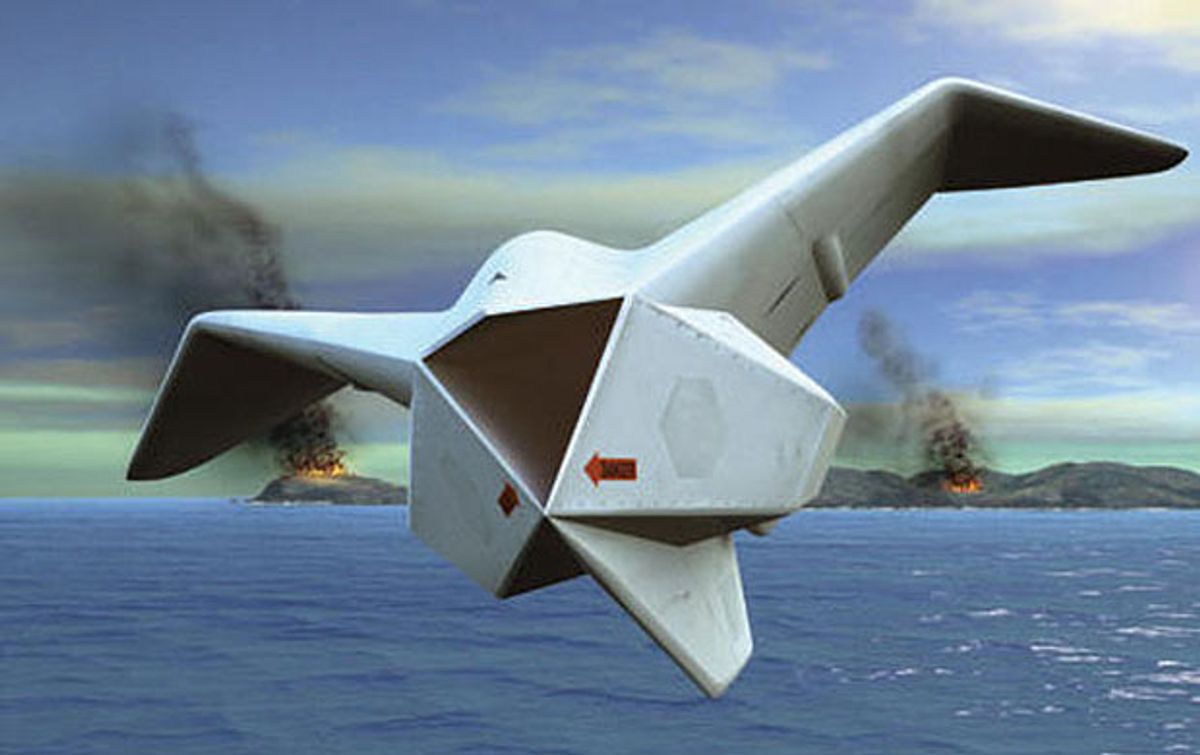The ocean is a big place, and DARPA wants to fill it with robots. All of it. Because rather than having to send robots to whatever part of the ocean you want to have robots in, wouldn't it just be much easier of robots were there already? Sure it would! Yes, it's impractical, and maybe even borderline impossible, but hey, it's DARPA, and this is what they do.
DARPA’s Upward Falling Payloads program would seed the world's oceans with remotely deployable robot pods. The pods, or nodes, would stay hidden at the bottom of the sea until activated by a secret signal, whereupon they'd rise to the surface ("falling upward") and do... Well... They'd do whatever you'd want them to do: passive sensing, active sensing, communications, or even launching UAVs. As with most of their programs, DARPA has no idea how to go about doing this, but they're hoping that a pile o' cash will tempt someone else to make it all work.
“The goal is to support the Navy with distributed technologies anywhere, anytime over large maritime areas. If we can do this rapidly, we can get close to the areas we need to affect, or become widely distributed without delay,” said Andy Coon, DARPA program manager. “To make this work, we need to address technical challenges like extended survival of nodes under extreme ocean pressure, communications to wake-up the nodes after years of sleep, and efficient launch of payloads to the surface.”
Depending on the specific payload, systems would provide a range of non-lethal but useful capabilities such as situational awareness, disruption, deception, networking, rescue, or any other mission that benefits from being pre-distributed and hidden. An example class of systems might be small unmanned aerial vehicles (UAVs) that launch to the surface in capsules, take off and provide aerial situational awareness, networking or decoy functions. Waterborne applications are sought as well.
The UAV in the above picture, incidentally, isn't part of this program, but it totally could be. It's Lockheed Martin's Cormorant, which was being developed on a DARPA contract through 2008, and was designed to do more or less exactly what the UFP program is looking for, except out of a submarine instead of a deep-sea node. Obviously, recovery would be a challenge, but if you replace the sub with a capsule this is how it would work:
A jet and rocket powered UAV may be on the ambitious end of the UFP program, but it's easy to see the benefits: you can get an instant presence nearly anywhere in the world without having to go through the time consuming and revealing hassle of trying to send a piece of hardware out there after you've needed it. It means more information faster, hopefully leading to better decisions. And let's be honest: the whole concept has that little extra craziness that we love to see coming from DARPA, and whether or not it comes to fruition, it's fun to think about the potential that comes with remotely deployable deep-sea UAVs.
[ DARPA ] via [ NetworkWorld ]
Evan Ackerman is a senior editor at IEEE Spectrum. Since 2007, he has written over 6,000 articles on robotics and technology. He has a degree in Martian geology and is excellent at playing bagpipes.



